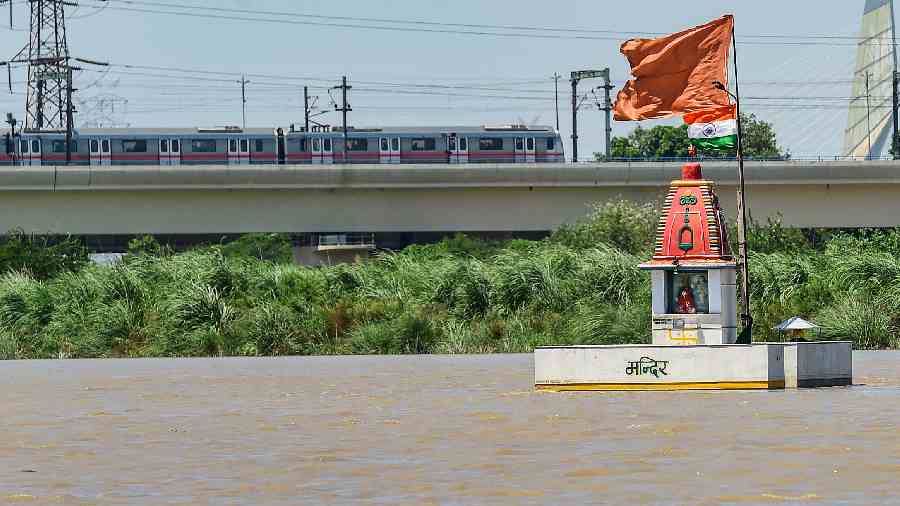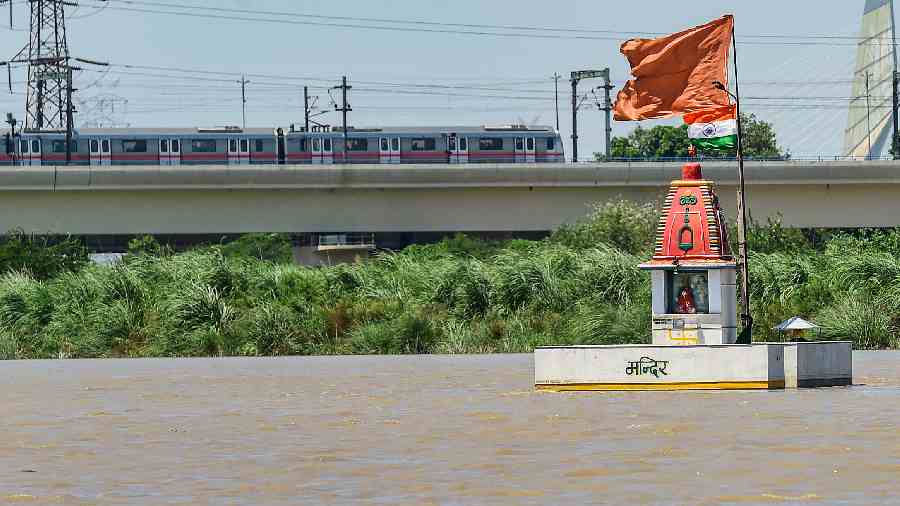The swollen Yamuna continued to flow above the danger mark of 205.33 metres in Delhi on Saturday morning and efforts to evacuate people from vulnerable areas are being intensified, officials said.
The flood control room said the water level reached 205.99 metres at 5 am. The river had breached the danger mark of 205.33 metres around 4 pm on Friday following heavy rain in upper catchment areas, prompting authorities to evacuate people from low-lying areas.
A forecast said the water level is likely to touch the 206-metre mark around 5 pm and remain stable thereafter.
East Delhi District Magistrate, Anil Banka said, "Around 2,300 people had been evacuated from low-lying areas in his district and shifted to safer places till Friday night. Evacuation efforts will be intensified on Saturday," he said.
A flood alert is declared in Delhi when the discharge rate from the Hathnikund Barrage in Haryana's Yamuna Nagar crosses the 1 lakh-cusecs mark. People living near the floodplains and in flood-prone areas are evacuated then, an official said.
The flood control department on Thursday advised all sector officers to keep a vigil in their respective areas and take necessary action at vulnerable points by deploying the requisite number of quick-reaction teams to warn people residing within river embankments.
Thirty-four boats and mobile pumps have been deployed in low-lying areas.
"Around 37,000 people who live in Yamuna floodplains and low-lying areas in Delhi are considered vulnerable to flooding. A flood control plan has been with all departments concerned," Banka said.
People evacuated from low-lying areas in the floodplains are being shifted to temporary structures like tents and permanent buildings like schools in safer areas.
The Delhi flood control room reported a discharge rate of around 17,000 cusecs from the Hathnikund Barrage at 6 am. It was 1.49 lakh cusecs at 1 am on Saturday and 2.21 lakh cusec at 3 pm on Thursday.
One cusec is equivalent to 28.32 litres per second.
Normally, the flow rate at the Hathnikund barrage is 352 cusecs, but the discharge increases after heavy rainfall in the catchment areas. The water discharged from the barrage normally takes two to three days to reach the national capital.
According to the India Meteorological Department, "widespread rainfall with isolated heavy rain" is likely in Himachal Pradesh, Uttarakhand and Haryana on August 14 and 15.
Last year, the Yamuna river breached the danger mark on July 30 and the water level at the Old Railway Bridge had risen to 205.59 metres.
In 2019, the flow rate had peaked at 8.28 lakh cusec on August 18-19, and the water level of the Yamuna had hit the 206.60-metre mark.
In 1978, the river had swelled to the all-time record water level of 207.49 metres. In 2013, it had risen to 207.32 metres.












